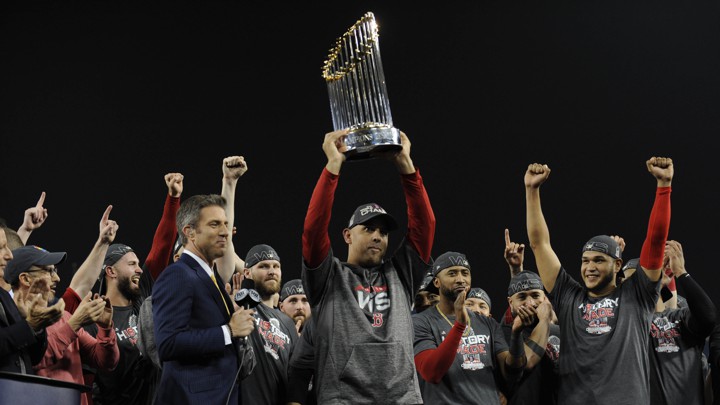 |
| Bobby Orr was at the center of a golden age in Boston sports. (NHL) |
It's a weird time to be a Boston sports fan. The Red Sox are coming off their second last-place finish in three years and have a franchise-defining offseason ahead of them. The Patriots haven't won a playoff game in nearly four years and are still trying to find their way in the post-Tom Brady (and now post-Josh McDaniels) era. The Celtics are carrying on without the coach who led them to the NBA Finals a few months ago, while the Bruins also have a new coach but no longer have Zdeno Chara.
There's a lot of uncertainty these days around the Hub. Are the Red Sox going to keep Xander Bogaerts and Rafael Devers? What's the deal with New England's new coaching staff? Is this Bailey Zappe kid for real? And what sort of terrible things did Ime Udoka really do?
It's enough to make us pine for a simpler time just a few short years ago, before the Mookie Betts trade and before Brady left. Back when Boston was at the top of the sports world, rather than just another sports town.
It's hard to imagine Boston's glorious run from 2002-2019 ever being replicated, let alone topped. The Patriots ripped off three championships in four years during the 2000s, then tacked on three more during the 2010s for good measure. The Red Sox went to four World Series and won all of them after going 86 long, painful years without a title. The Celtics and Bruins both chipped in a trophy as well, adding banners to the Garden rafters in 2008 and 2011, respectively.
It seemed like it would never end, until it suddenly did. The Red Sox blew up the greatest team they've ever had, the Patriots let Brady walk out the door, the Celtics couldn't get past LeBron and the Bruins kept coming up short.
We're in a new era now, one that hasn't produced a championship in nearly four years. The Celtics are the only team with a reasonable chance of winning one any time soon, and if they do it'll be great. Nothing will ever compare to that magical run, though, at least probably not in our lifetimes.
I was trying to think if there'd ever been a similar era in Boston sports where all of the city's teams were good at the same time for a sustained period. There wasn't, of course, but Boston's best stretch before the 2000s was probably a 10-year run from 1967-1976.
 |
| Carlton Fisk became a New England folk hero with his Game 6 heroics. (The Boston Globe) |
1967 is a watershed year in Boston sports history, perhaps the most important aside from 2004. When the year started, Bill Russell was in his first season as a player-coach for the Celtics (making him the first black head coach in NBA history) and Bobby Orr was an 18-year-old rookie for the Bruins. That summer, the Red Sox finally emerged from the second division after eight consecutive losing seasons, capturing the hearts of New England with their Impossible Dream run. The Patriots were bad, but they'd only been around since 1960 and weren't very popular yet.
The Red Sox lost the battle in the World Series against the St. Louis Cardinals that fall, but they eventually won the war. The team's unexpected success in '67 gave birth to Red Sox Nation and kicked off a run of 16 straight winning seasons -- the longest stretch in franchise history.
The Celtics continued to dominate through the end of the '60s, winning back-to-back championships in 1968 and 1969 before Russell called it a career. Then it was Orr's time to shine, as he led the Big Bad Bruins to Stanley Cup victories in 1970 and 1972.
The Celtics re-emerged in the mid-70s with a new core, winning titles in 1974 and 1976. Those triumphs were sandwiched around the epic 1975 World Series between the Red Sox and Reds. While the Red Sox lost again, Carlton Fisk delivered a moral victory with his iconic home run in Game 6.
The Patriots were mostly terrible during this time, but in 1976 their fortunes finally changed. They went from 3-11 to 11-3 and made the playoffs, starting a streak of five straight winning campaigns.
While it wasn't as great as the golden era of the 2000s or 2010s, it was still a pretty good run. All four teams made the postseason at least once, with every team except the Patriots making multiple championship appearances. Boston won six titles during an nine-year stretch from 1968-1976 and they were well-distributed, with championships in 1968, '69, '70, '72, '74, and '76.
Those years were turbulent ones for the country as well as the city, marked by Vietnam, race riots, Watergate and social unrest. But for Boston sports fans, at least, they were pretty good.




